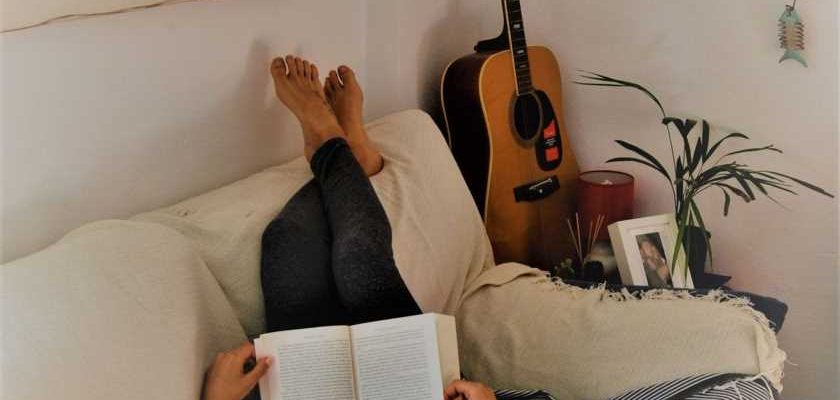Recovery Clinic: why daytime resting might be as important as sleep to beat fatigue
In the latest instalment of Recovery Clinic, Strong Women’s Chloe Gray is wondering whether slowing down is the answer to our tiredness crisis.
I’m calling it: our obsession with sleep isn’t serving its purpose. While the past few years have seen books on the subject of snoozing become bestsellers, celebrities made of sleep experts and our hard-earned money spent on expensive supplements in the pursuit of a restful night, we’re still knackered.
Three in five of us still feel exhausted when we wake up, even after having a lot of sleep, according to a YouGov poll from earlier this year, and feeling tired all the time has become so common that the NHS has given it its own acronym: TATT. It begs the question: are we living so intensely that sleep alone isn’t enough to help us recover?
You may also like
Sleep deprivation: 5 signs you’re not getting enough good quality sleep, according to an expert
According to Dr Nerina Ramlakhan, neurophysiologist, sleep expert, and author of Finding Inner Safety, that might just be the problem. “While we sleep, our nervous system is reset, going from the sympathetic nervous system (SNS) of demand and stress to the parasympathetic nervous system (PNS) or so-called rest and digest system that enables us to heal and repair on every level. But daytime rest is also restorative to your focus, productivity and energy levels,” she says.
It turns out, resting is a biological demand. Living in line with our circadian rhythm – the 24-hour biological clock that governs the sleep and wake cycle – has become a big conversation point in the sleep boom. I have become obsessed with calibrating mine by finding the perfect bedtime and looking at bright lights in the morning to alert my body to the fact it’s daytime.
But it turns out, we’re all guilty of neglecting our ‘ultradian rhythm’, and that could be the reason we’re so knackered. “Known as your Basic Rest Activity Cycle, it occurs several times a day, roughly every 90 to 120 minutes,” says Dr Ramlakhan.

She explains that these cycles involve up to two hours of focused attention followed by a desire to ‘switch off’: “you may start to feel woolly in your head, and this period of reduced focus lasts roughly 20 minutes. Often this is the time you might feel the need to take a break at work or make a cup of coffee. Then you come back to work and are able to focus for another chunk of time and so on throughout the day.”
Yet, how many of us actually live like this? I know I don’t, falling firmly in the ‘always on’ camp, whether that’s being physically active all day – pacing from a morning gym session to multiple meetings across London and straight out for dinners or social events with friends – or continuously mentally stimulated. Because even when we are sedentarily strapped to our desks, our brains work like hamsters on treadmills to meet deadlines while simultaneously keeping tabs on the by-the-minute news cycle and absorbing the activities of other people’s days from Instagram.
You may also like
Burnout and boundaries: why learning to say ‘no’ is so important for our mental health at work
“The rest break in this rhythm is nature’s way of allowing you to build up internal supplies of available energy,” explains Dr Ramlakhan. Fighting through these natural ebbs in our attention is worrying, she says, as it puts the body under more stress and makes us more tired.
Dr Ramlakhan also says that resting more in the day actually helps us to sleep better at night, activating the PSN throughout the day so you are more relaxed at bedtime and can ease into more restorative sleep.
That’s even true of naps. While they traditionally get a bad rap for ruining our sleep cycle, Dr Ramlakhan says certain styles of daytime snoozing can actually be the ultimate form of rest. “Power napping has to be done correctly. The ideal is 10-20 minutes of near-sleep, a state of relaxation which should be practised at some point between two and four in the afternoon, but no later. You can do this sitting in a chair or even lying on the floor with legs over a bolster or chair. Elevating the legs is especially good for resetting the nervous system and reducing stress levels,” she says.
Outside of those times, or for those who struggle to nap, a period of rest can include anything that feels refreshing. “Conscious breathing or meditation, a quick walk or a yoga session are all forms of rest. These moments are about changing your focus and doing something different, so, if you sit at a screen all day, don’t fill your breaks with scrolling on your phone, instead do something active or go outside to enjoy some fresh air,” she says.
An outside, phone-free break every two hours sounds so far off the lifestyle that many of us lead. But it sounds like a simple solution to our never-ending battle with tiredness. “By building more peaceful moments of rest into your day you will notice the difference it makes to your fatigue,” promises Dr Ramlakhan.
Images:
Source: Read Full Article
